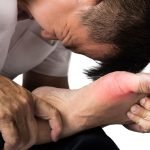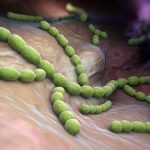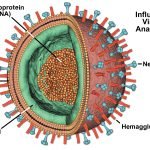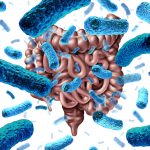Robin DiPasquale, ND, RH(AHG)
At a certain level, anxiety can be normal and useful, stimulating one to purposeful action. When in excess, however, it can interfere with one’s ability to function. Abnormal expressions of anxiety can range from a feeling of uneasiness, to a sense of worry, to all-out panic. It stresses the nervous system, triggering negative effects on the entire body, especially the hormonal system.
Although each patient will be expressing anxiety symptoms with etiologies based on their unique set of circumstances, the nervous system is a significant area to consider supporting in treatment. This is where our extensive list of plants that act on the nervous system can exert their potential for healing.
Valeriana officinalis and Piper methysticum
Valeriana officinalis (valerian) and Piper methysticum (kava kava) are two plants that have prominent roles, with extensive representation in the literature related to the treatment of anxiety. With Valeriana officinalis, it is wise to keep in mind that a percentage of the population will have a paroxysmal reaction, acting as a stimulant rather than a sedative (Moore, 1995). According to Moore, “Valerian is a stimulant to digestion, a stimulant to the lungs and a stimulant to the cardiovascular output. If you are an adrenalin-stress person, with diminished intestinal tract function, have dilated and dry bronchial rings with shallow, guarded breathing and a rapid, thready adrenalin pulse, valerian stimulates digestive functions, increases the depth and efficiency of respiration, slows and strengthens the pulse, and sedates the brain. It is a tonic sedative. If you are an adrenocortical-stress person, with a strong and demanding intestinal tract, good moist lungs, and the cardiovascular excess that accompanies moderate essential hypertension from increased blood volume and sodium retention, then valerian will stimulate the functions that are already excessive, and leave you with both sedation and physical stimulation” (1995).
Controversy remains regarding Piper methysticum and its use with anxiety. The herb has shown excellent clinical effectiveness in diminishing the symptoms of anxiety and panic attacks. An evidence-based database lists Piper methysticum as having strong scientific evidence for its use for anxiety. The controversy is related to the cases of liver toxicity that were reported in Europe. The FDA has issued a warning about its safety. It is of interest that such an effective herb for anxiety, one that was strongly competing for sales with benzodiazepine drugs, has acquired such controversy around its safety.
Other Herbals
Avena sativa (oats) and Scutellaria lateriflora (skullcap) are considered the trophorestoratives of the nervous system. A long infusion (about 8 hours) of 30mL of each herb per liter of water yields a mineral rich extraction that can be taken 236mL 2-4 times a day for 4-12 weeks, to rejuvenate nerves and nerve conduction and lessen the impact of stress on the nervous system.
Passiflora incarnata (passiflora), Melissa officinalis (lemon balm), Hypericum perforatum (St. John’s wort), Matricaria recutita (chamomile), Lavandula angustifolia (lavender) and Tilia cordata (linden flower) are representative of the many herbs that can be incorporated into formula to address the various expressions of anxiety. Eschscholzia californica (California poppy), Lactuca virosa (wild lettuce) and Humulus lupulus (hops) are sedative and hypnotic, allowing the parasympathetic nervous system to be dominant, diminishing anxiety.
It may be important, however, to look deeper than only supporting the nervous system in order to understand what is behind the abnormal triggering of someone’s anxiety.
Menopause
As the baby boomer generation ages, more and more women will enter perimenopause and menopause. As the ovaries wane in function, more demand is placed on the adrenal glands to produce estrogen. If the adrenal glands are already taxed, stress response can begin to intensify and show itself as anxiety. The literature shows anxiety symptoms connected with fluctuations in serum gonadal hormones in perimenopausal women (Tangen, 2008) and an increase in panic attacks in postmenopausal women (Smoller, 2007, 2003). Certainly, the nervous system materia medica could be supportive in these women. Leonurus cardiaca (motherwort) and both Verbena officinalis and Verbena hastate (vervain) are herbs to consider. Leonurus works as a nervine and cardiovascular support, and Verbena is a nervine specifically targeted for hormonal effects that create nervous disorders. Both are very bitter and move liver chi stagnation.
The hormone balancing herbs, however, will address the deeper cause. In one study, Actaea racemosa (black cohosh) and Hypericum perforatum (St. John’s wort) were shown to be most useful in alleviating mood and anxiety changes in menopause (Geller, 2007). The hormone-influencing triterpenoid and steroidal saponin herbs, including Panax ginseng (Asian ginseng) and Panax quinquefolius (American ginseng), Glycyrrhiza glabra and Glycyrrhiza uralensis (licorice), Actaea racemosa (black cohosh), Dioscorea villosa (wild yam), Smilax spp (sarsaparilla), Tribulus terrestris (puncture vine) and Asparagus racemosa (asparagus root or shativari), will be important herbs to consider for treatment when anxiety has its root in hormonal imbalance.
Pheochromocytoma
A red herring not to be overlooked when anxiety is the presenting symptom is pheochromocytoma. Consider this case summary: MR was a 34-year old female who presented with sudden onset of anxiety and heart palpitations following a motor vehicle accident. The episodes were mild at first, then intensified, with heart rate and blood pressure elevated during the episodes. MR was treated with a nervous system formula and cardiac herbs to address the anxiety and heart palpitations, but symptoms continued to worsen. Excruciatingly painful headaches and pulsating vision became prominent symptoms. Upon referral to a cardiologist, EKG was normal; however, test results show stress on the heart and increased cardiac risk. MR was diagnosed with A-V node tachycardia and put on beta-blockers. Episodes continued, but were more mild. Ablation surgery was recommended and performed. The episodes worsened after this procedure. Acupuncture would trigger episodes 24 hours post treatment. Various homeopathic remedies relieved some symptoms temporarily, and stopped the episodes in the middle of the night, allowing her to sleep, but they continued throughout the day.
Any naturopathic treatment, and even pharmaceutical treatments, cannot be effective when the cause has not been addressed. MR was referred to a neurologist, and then to an endocrinologist, who ordered a 24-hour urine test. Fractionated metanephrines came back with a 10-fold elevation. Eighteen months after the symptoms began, the diagnosis was made of pheochromocytoma. MR was put on alpha-blockers and bed rest for two weeks to try and shrink the tumor, followed by surgery, which removed the tumor and the right adrenal gland. Post surgically, MR has no anxiety, no heart palpitations, no other symptoms, and she is feeling better than she has in a long time. She still anticipates the episodes, but is happy to see that they are no longer occurring. Genetic testing was recommended. Although pheochromocytomas are rare, it is important to be reminded that a combination of anxiety, heart palpitations, headache, and other neurological symptoms may require a look at this disease (Gifford, 1985; Manger, 1993; Reisch, 2006, 2008).
As NDs, we have many tools in our toolbox to assist people with anxiety, ranging from physical medicine modalities, counseling techniques and homeopathic remedies to biotherapeutic drainage, herbal remedies, gemmotherapy, flower essences, acupuncture, orthomolecular therapy, and diet and lifestyle counseling. Stress often is a huge contributing factor, so helping someone to learn to reduce or eliminate their stress and manage effectively what they cannot eliminate can be powerful foundational work.
 Robin DiPasquale, ND, RH(AHG) earned her degree in naturopathic medicine from Bastyr University in 1995 where, following graduation, she became a member of the didactic and clinical faculty. For the past eight years, she has served at Bastyr as department chair of botanical medicine, teaching and administering to both the naturopathic medicine program and the bachelor’s of science in herbal sciences program. Dr. DiPasquale is a clinical associate professor in the department of biobehavioral nursing and health systems at the University of Washington in the CAM certificate program. She loves plants, is published nationally and internationally, and teaches throughout the U.S. and in Italy about plant medicine. She is an anusara influenced yoga teacher, teaching the flow of yoga from the heart. She currently has a general naturopathic medicine practice in Madison, Wis., and is working with the University of Wisconsin Integrative Medicine Clinic as an ND consultant.
Robin DiPasquale, ND, RH(AHG) earned her degree in naturopathic medicine from Bastyr University in 1995 where, following graduation, she became a member of the didactic and clinical faculty. For the past eight years, she has served at Bastyr as department chair of botanical medicine, teaching and administering to both the naturopathic medicine program and the bachelor’s of science in herbal sciences program. Dr. DiPasquale is a clinical associate professor in the department of biobehavioral nursing and health systems at the University of Washington in the CAM certificate program. She loves plants, is published nationally and internationally, and teaches throughout the U.S. and in Italy about plant medicine. She is an anusara influenced yoga teacher, teaching the flow of yoga from the heart. She currently has a general naturopathic medicine practice in Madison, Wis., and is working with the University of Wisconsin Integrative Medicine Clinic as an ND consultant.
References
Geller SE, Studee L: Botanical and dietary supplements for mood and anxiety in menopausal women, Menopause May-Jun;14(3 Pt 1):541-9, 2007.
Gifford RW Jr et al: Diagnosis and management of pheochromocytoma, Cardiology 72 Suppl 1:126-30, 1985.
Manger WM, Gifford RW Jr: Pheochromocytoma: current diagnosis and management, Cleve Clin J Med Sep-Oct;60(5):365-78, 1993.
Moore M: Medicinal Plants of the Pacific West. Santa Fe, 1995, Red Crane Books.
Natural Standard: Databases, www.NaturalStandard.com
Reisch N et al: Pheochromocytoma – still a challenge, Intewrnist (Berl) Dec 21, 2008.
Reisch N et al: Pheochromocytoma: presentation, diagnosis and treatment, J Hypertens Dec;24(12):2341-3, 2006.
Smoller JW et al: Prevalence and correlates of panic attacks in postmenopausal women, results from an ancillary study of the Women’s Health Initiative, Arch Intern Med 163:2041-2050, 2003.
Smoller JW et al: Panic attacks and risk of incident cardiovascular events among postmenopausal women in the Women’s Health Initiative Observational Study, Arch Gen Psychiatry Oct;64(10):1153-60, 2007.
Tangen T, Mykletun A: Depression and anxiety through the climacteric period: an epidemiological study (HUNT-II), Psychosom Obstet Gynaecol June;29(2):125-31, 2008.





